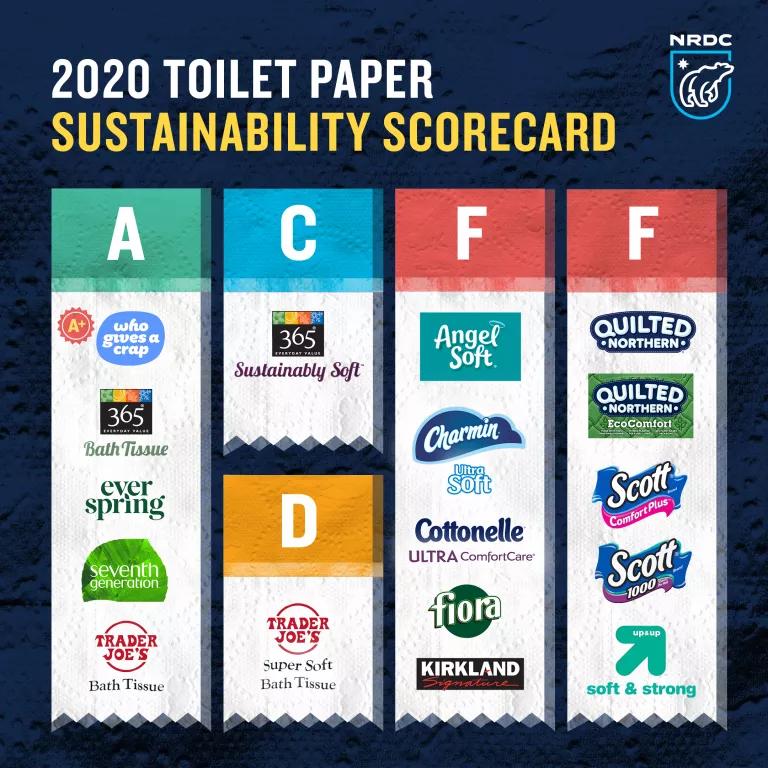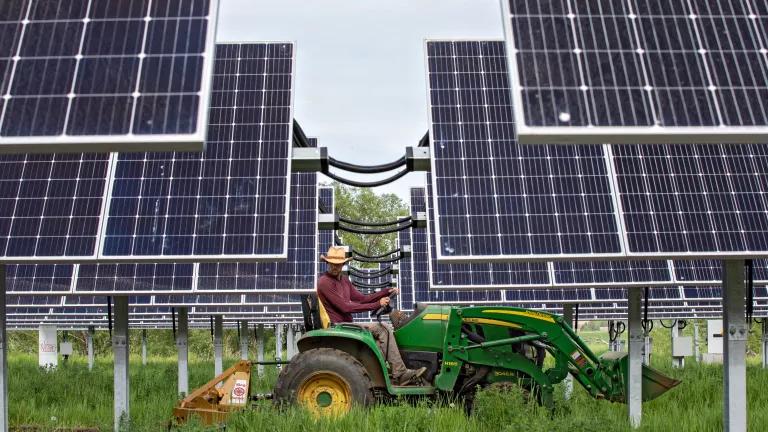Kimberly-Clark’s 2030 Goals Take On its Forest Carbon Impact
There are still many areas for improvement in Kimberly-Clark’s 2030 goals, and ultimately, the company's sustainability will depend on the actions it takes to achieve and measure these targets. However, with these new commitments, Kimberly-Clark steps further ahead of other major brands in the U.S. tissue sector by recognizing the critical role that forests like the Canadian boreal play in the fight against climate change.

Kimberly-Clark (K-C), the company behind Kleenex, Cottonelle, and Scott, recently announced expanded 2030 climate goals that signal the company is moving even further ahead of other major tissue brands when it comes to its social and environmental impact. In contrast to Procter & Gamble’s (P&G) own recent climate announcement, K-C’s expanded goals take a step in the right direction toward addressing its forest carbon footprint and accounting for Scope 3 emissions. While K-C still needs to address issues in its supply chain, these new commitments demonstrate improved corporate responsibility for a company sourcing from the Canadian boreal, the most carbon rich forest on the planet.
Acknowledging Tissue’s Forest Carbon Footprint
Among K-C’s expanded climate ambitions are a commitment to reduce their Scope 1 and 2 greenhouse gas emissions by 50% by 2030, along with a new focus on reducing their Scope 3 emissions by 20% by 2030. Whereas Scope 1 and 2 emissions account for a company’s production and power purchasing emissions, Scope 3 emissions include all other indirect emissions that occur both upstream and downstream in a company’s value chain, such as emissions associated with logging forest fiber for their products. Given the company’s 2019 Scope 3 emissions were more than triple their combined Scope 1 and 2 emissions (12.3 million metric tons of CO2e compared to 3.7 million metric tons of CO2e), the expansion of K-C’s climate goals to account for Scope 3 emissions marks a significant step in the right direction, both in further cutting carbon emissions and in capturing the true climate impact associated with the company and its products.
Critically, K-C intends for this Scope 3 commitment to include its forest carbon footprint, an essential component for tissue company’s sourcing from the boreal and other high-carbon value forests. But right now, this announcement lacks a timeline and specific benchmarks for implementation. Ultimately, the effectiveness of this expanded commitment will hinge on the assumptions K-C makes about the carbon in the forests it sources from and its overall timeline for taking action to reduce its forest carbon footprint. That said, simply by committing to calculate and reduce its forest carbon footprint, the company is putting itself ahead of other major tissue brands.
Ahead of its Peers
Together, K-C’s new Scope 3 reduction commitment and future forest carbon accounting goals put the company a step ahead of competitors like P&G, which has no explicit goals set to reduce Scope 3 emissions or recognize the importance of protecting the boreal forest as a vast carbon storehouse. P&G’s new “It’s Our Home” campaign, which promises to invest in protecting carbon sinks as a way to offset their remaining operations emissions by 2030, does not consider P&G’s Scope 3 emissions despite them accounting for over 98% of the company’s total emissions. Moreover, K-C explicitly acknowledges the climate value of forests in relation to its forest fiber sourcing: "Our ongoing efforts to reduce our use of natural forest fiber from high-carbon value forests and increase our use of environmentally preferred fibers such as plantation-grown wood, alternative non-wood and recycled fibers will continue to be important levers for lowering our forest carbon footprint." This signals even greater movement toward corporate responsibility in curbing the climate crisis.
Still Much Further to Go
While these are great steps, K-C can still do a lot more to show true environmental leadership, including stepping up its commitment to protecting the rights of the communities impacted by its tissue supply chains. Despite the company’s 2019 Global Sustainability Report voicing support for the well-being and land tenure rights of Indigenous Peoples, K-C stops short of requiring their suppliers to secure free, prior, and informed consent (FPIC) from Indigenous Peoples before operating on their lands. Committing to FPIC, which is enshrined in the United Nations Declaration on the Rights of Indigenous Peoples, is essential to ensuring Indigenous communities have the right to dictate the future of their lands.
Moreover, the company’s new commitments do not address some of the threats its tissue supply chains pose to threatened and endangered species. K-C still does not require its boreal pulp suppliers to cease operating in the critical habitat of boreal caribou, which suffer population loss due to industrial logging.
Additionally, K-C continues to make its at-home tissue products entirely from virgin forest fiber and has not incorporated any recycled or sustainable alternative fibers into the brands they offer like Kleenex, Cottonelle, and Scott. This earned the company F grades across its toilet paper and paper towel brands and a D grade for its Kleenex facial tissue brand in NRDC’s scorecard ranking major tissue brands according to their impacts on forests. In these areas, K-C has more or less stuck to the status quo as a laggard rather than a true leader.

Looking Ahead
There are still many areas for improvement in K-C’s 2030 goals, and ultimately, K-C’s sustainability will depend on the actions it takes to achieve and measure these targets. However, with these new commitments, K-C steps further ahead of other major brands in the U.S. tissue sector by recognizing the critical role that forests like the Canadian boreal play in the fight against climate change.
All tissue manufacturers should dramatically reduce their use of virgin forest fiber in their products—especially those available to consumers. Tissue makers must also require the implementation of FPIC and protection of critical threatened species habitat for any area where they source. And other tissue companies should follow K-C’s lead in committing to reduce their Scope 3 emissions while factoring in the forest carbon footprint of their supply chains, rather than attempt to outsource climate action through carbon offsets. Only with these actions combined can we have assurance that corporate sustainability goals are based in the reality of their supply chains, and that the boreal forest will be protected for its communities, its creatures, and our climate.
Take Action: Tell P&G CEO David Taylor to stop flushing the climate-critical Canadian boreal forest.




